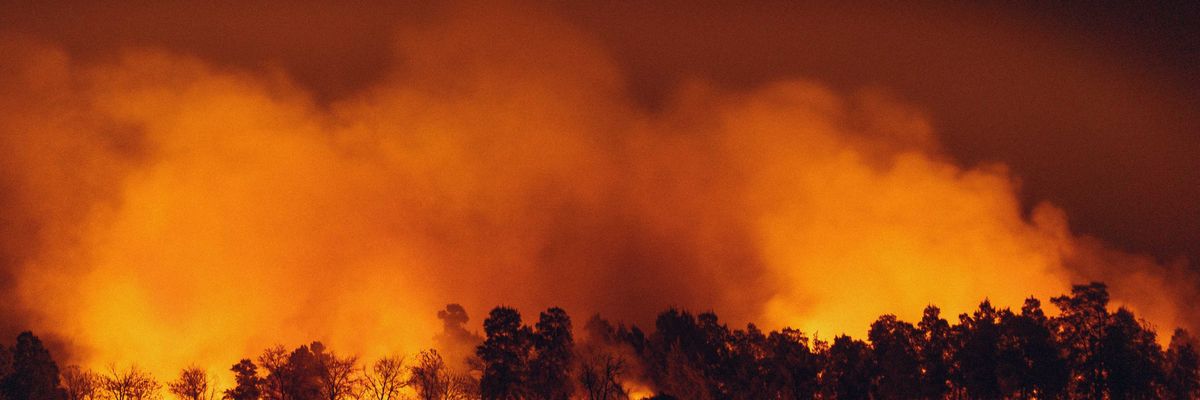doe
DOE sets course for offshore wind's integration with national grid
In a move to fortify the U.S. power supply, the Department of Energy outlines a strategy for connecting offshore wind farms to the country's electric grid.
In short:
- The Department of Energy's report suggests building vast power lines across the Atlantic to enhance the connection between offshore wind farms and onshore grids, aiming to alleviate grid congestion and improve reliability.
- This integrated network could facilitate electricity flow to high-demand areas, potentially reducing consumer costs by optimizing between regions with different electricity prices.
- The report highlights the need for standardizing high-voltage direct current technology across offshore wind projects to ensure compatibility and efficiency.
Key quote:
"Offshore wind energy is already powering more than one hundred thousand homes along the East Coast, with the potential to grow and further enhance grid reliability and reduce even more fossil fuels."
— Jennifer Granholm, U.S. Secretary of Energy
Why this matters:
The appeal of offshore wind energy lies in its massive potential to generate significant amounts of electricity without emitting greenhouse gases. For countries with limited land or those looking to diversify their energy mix, offshore wind farms represent an attractive solution. They can be located far enough offshore to reduce visual and noise impacts while still being connected to land-based power grids. In 2017, even the Trump administration seemed to believe in the potential of offshore wind energy.
Federal energy regulators to review gas export terminals amid DOE's pause
Despite the Department of Energy's recent pause on approvals, the Federal Energy Regulatory Commission is set to continue its reviews of natural gas export terminals.
In short:
- The FERC's decision to proceed with evaluations signifies its operational independence, even as the DOE reassesses its stance on liquid natural gas (LNG) export projects.
- Environmental groups and industry observers are closely monitoring FERC's actions, especially in light of recent environmental and energy security concerns.
- The DOE's pause, focusing on a comprehensive review of market, economic, national security, and environmental factors, contrasts with FERC's ongoing project assessments.
Key quote:
"FERC is an independent agency that is supposed to rise above politics."
— Neil Chatterjee, former FERC Chair during the Trump administration.
Why this matters:
FERC's decision to proceed with LNG project reviews amidst the DOE's pause reflects the complexity of national energy policy, directly impacting both environmental health and the broader national energy strategy.
The U.S. has taken the global lead on liquid natural gas production and export, as economic promises and environmental worries collide.
DOE puts $1.2 billion towards carbon capture plants
DOE commits $450M to install rooftop solar for highest-need Puerto Ricans
Gabriela Aoun Angueira reports in Grist about Department of Energy plans to allocate nearly $500 million to install rooftop solar and battery backup systems on the homes of vulnerable residents in Puerto Rico, aiming to provide reliable and affordable energy to high-need households amid frequent blackouts.
In a nutshell:
While overhauling Puerto Rico's grid will take years, these funds will offer immediate help to the residents most vulnerable during blackouts. The funding, part of the $1 billion Puerto Rico Energy Resilience Fund approved by Congress, will target low-income families, including those medically vulnerable and living in remote communities. The program's third-party ownership model will relieve households of system maintenance, and community outreach efforts have helped shape the initiative, signaling a shift towards more inclusive and equitable program design.
Key quote:
“We’re very glad that it appears that their intention is to focus these funds on the people who are truly so low-income or disabled that they have no other viable way to acquire solar and storage,” PJ Wilson, president of the Solar and Energy Storage Association in Puerto Rico said. “Hopefully this helps lift people out of poverty.”
The big picture:
The blackouts in Puerto Rico have had significant effects on vulnerable populations, exacerbating existing challenges and hardships. With frequent power outages, access to essential services and resources like healthcare, communication, and clean water becomes even more limited, impacting the well-being and resilience of communities already facing socio-economic disparities.
Read the article at Grist.
Disparities abound in Puerto Rico. For example, Puerto Ricans are disproportionately affected with asthma. Lorraine N. Vélez-Torres reports that adult asthma rates are 1.3 times higher than in the U.S., and Puerto Rican children are twice as likely to be afflicted as compared to U.S. children.
Lights out for incandescent bulbs
The incandescent lightbulbs that have been illuminating American homes and businesses since Thomas Edison first unveiled them in 1879 are finally coming off U.S. shelves.
Granholm details views on climate law, gas, DOE staffing
Energy Secretary Jennifer Granholm offered new details on how her department is handling billions of dollars from the Inflation Reduction Act as she defended support of the Mountain Valley pipeline and Biden administration actions after Republican attacks on proposed energy projects tied to China.









